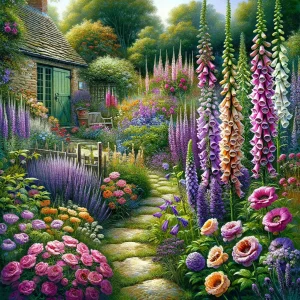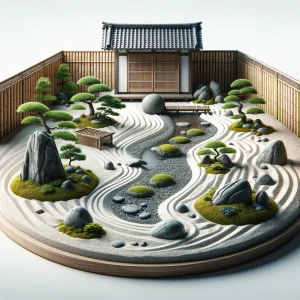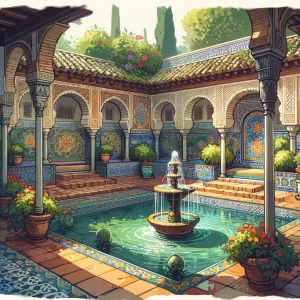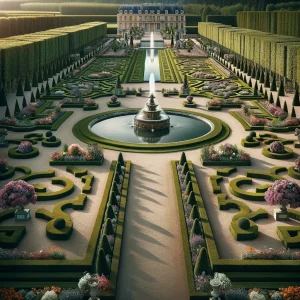In gardening, the past offers a treasure trove of inspiration, brimming with styles that time and trends have never diminished. From the serene beauty of Japanese Zen gardens to the grandeur of French formal gardens, historic landscaping styles provide a wealth of ideas that can be beautifully adapted to modern gardens. This blog explores the ways in which gardening enthusiasts can integrate elements of English cottage gardens, French formal gardens, Japanese Zen gardens, Italian Renaissance gardens, and Spanish Moorish gardens into contemporary spaces, bringing history to life in their backyards.

English Cottage Gardens: A Riot of Color and Charm
The quintessence of English cottage gardens manifests through their dense, mixed plantings, creating a lush and informal charm. To incorporate this style into your garden, consider adding a variety of flowering perennials such as lavender, foxgloves, and roses. Balancing control and spontaneity becomes key, allowing plants to self-seed and create unexpected delights. This approach suits gardeners looking for a low-maintenance yet visually captivating garden.
French Formal Gardens: Symmetry and Grandeur
The geometric precision and symmetry of French formal gardens can add elegance to modern landscapes. Recreating this style involves designing geometric flower beds, adding sculpted hedges, and including water features like fountains or reflective pools. While this style requires more maintenance, its stunning visual impact can transform a space into a serene and orderly retreat reminiscent of Versailles’ grandiosity.

Japanese Zen Gardens: Tranquil Simplicity
Japanese Zen gardens epitomize tranquillity, focusing on minimalism, natural materials, and element balance. Incorporating gravel or sand to represent water, with carefully placed rocks symbolizing mountains or islands, can achieve this style. Enhancements with bamboo fences, moss, and small evergreens further the sense of peace and simplicity. This style is perfect for creating a contemplative space for relaxation and meditation.

Italian Renaissance Gardens: Artistic Elegance
Italian Renaissance gardens stand out for their artistic elements and architectural features. Introducing symmetry and perspective through pathways, hedges, and statuary that lead the eye toward focal points, such as a classical statue or an ornate water feature, embodies this style. Adding terracotta planters filled with citrus trees or aromatic herbs can enhance your garden’s sensory experience, marrying form and function.

Spanish Moorish Gardens: Water’s Whisper
The essence of Spanish Moorish gardens lies in their enchanting use of water, intricate tile work, and shaded arcades. Adding water features like small fountains or reflecting pools brings soothing sounds and a cooling effect to your garden. Decorating with brightly colored tiles on walls, steps, or water features, and creating shaded seating areas with arches or pergolas offer a tranquil escape from the sun.
Adapting Historic Styles for Modern Gardens
In the process of reviving historic landscaping styles, it’s crucial to consider your climate zone and garden size. Many traditional elements can be scaled down or adapted using locally available materials and plants that thrive in your environment. Thus, overcoming misconceptions, it’s evident that these historic styles are within reach. Through creativity and adaptation, they can significantly enrich any garden, offering a unique blend of history and personal expression.
In sum, by integrating these timeless styles into modern landscapes, gardeners pay homage to the past and create spaces that offer refuge and beauty in the present. Whether drawn to the informal charm of English gardens or the serene simplicity of Japanese Zen gardens, there exists a historic style waiting to inspire your next outdoor project. Reviving historic landscaping styles forges a meaningful connection to the past, allowing gardeners to weave the beauty and wisdom of ancient landscapes into the fabric of modern life. By blending these timeless elements with contemporary design, we create gardens that are not only visually stunning but also imbued with history and personal significance. Let the journey through past gardens inspire your own space, transforming it into a testament to the enduring appeal of historic landscaping styles.
